Customer centricity is especially important for startups, given the need to induce customers to try their new products or services.
While I have previously explored customer centricity and its benefits, this article incorporates the experiences of nine startups that prioritise customer centricity.
The insight from these startups shows that founders can benefit from incorporating customer centricity into major stages of their journey, such as discovering customer needs, building product and scaling. It also discusses how founders evaluate customer centricity and justify its costs.
A huge thank you to the founders who generously contributed their insights and time to this case study. Your passion for your customers is inspiring and really shone through in our conversations.
Table of contents
Discovering customer needs
- A personal mission: Multitudes
- A problem you face: Mys Tyler
- A problem hiding in plain sight: Heaps Normal
Building a product that customers love
- Context: Dovetail
- Community: MyGigsters and Dovetail
- Transparency: Multitudes
Scaling with customer centricity
- Organisational culture: Mr Yum
- Product decisions that reduce friction: Linktree
- Transparency of customer feedback: Dovetail
Evaluating customer centricity metrics
- Align your business model: Mr Yum and Book an Artist
- Capturing qualitative context: Dovetail and Mr Yum
- A focus on customer success: EntryLevel and Mr Yum
Discovering customer needs
Founders often break into a market niche by identifying a small group of initial users who they predict will love the product they’re building. But how did they discover this unmet need and market niche in the first place?
Many of the founders I spoke with found their market niche through their personal journeys. I include three examples below.
- A personal mission: building a business to achieve a life’s mission.
- A problem you face: finding the empathy to build a hyper-personal solution.
- A problem hiding in plain sight: finding a large, underserved market through observation.
A personal mission: Multitudes
Multitudes helps businesses improve software engineering performance by evaluating teams through a people-focused lens using Diversity, Equity and Inclusion (DEI) principles.
Early in her career, Founder Lauren Peate worked for an organisation preventing violence against women. There she saw how DEI principles could be used to save lives. Through her subsequent consulting experience, she realised principles such as understanding privilege and allyship could be used to build the psychological safety needed for team members to participate and improve performance. The trust this approach built generated strong interest from her initial clients.
Embedding these principles into Multitudes’ software product is a scalable way for Lauren to drive behaviour change and achieve her mission of creating fairer workplaces through DEI.
You can read more about Multitudes and Lauren’s journey here.
A problem you face: Mys Tyler
Mys Tyler is a platform that matches women with clothes that fit them.
Sarah Neill wanted help styling outfits to suit her body. So, without access to a personal stylist, she turned to social media and influencers, but realised that if they were a different height, shape or size, the outfits she loved may not fit her. She wanted a way to find stylish women of the same height and size as her who were already doing the job of finding clothes that would fit.
This is the basis for Mys Tyler’s hyper-personal, deeply human approach, which allows user to discover styling and like-bodied creators. The app creates a space for micro- and nano-influencers to build highly engaged communities, and women to enjoy a hyper-personalised fashion experience. A key value of Mys Tyler’s FIT Algorithm is its ability to match women to these long-tail of creators or influencers who are most relevant to them.
This level of inclusivity and relevance will be difficult for any single brand to replicate, and has endeared Mys Tyler to a community of 125,000 women globally.
You can read more about Mys Tyler and Sarah’s journey here.

A problem hiding in plain sight: Heaps Normal
Heaps Normal is a non-alcoholic beer brand, launched after its four founders realised there’s a large group of people who want to reduce their alcohol consumption, yet don’t identify as being completely sober. This group was overlooked by large beer companies and non-alcoholic brands.
While there is usually limited data on underserved segments, there are telltale signs. The founders observed the behaviour of those around them, looking for activities that have become a habit without an obvious underlying reason. They noticed that people drank for many positive reasons, such as social events. This observation prompted the thought: ‘What if they could enjoy the taste of beer at these events without the downsides associated with alcohol or the stigma of being non-alcoholic?’
They tested their hypothesis with a small group of experts and potential customers. These initial users loved the new beer even though most identified as alcohol drinkers.
These were indicators of product-market fit, and they have seen strong demand since.
Building a product that customers love
The previous section detailed three stories of founders discovering their initial users. This section dives into three strategies for incorporating customer empathy into product design.
1) Context: discovering customer insights and effectively communicating them to other functions in the organisation.
2) Community: building an engaged group of users who facilitate effective product development and customer acquisition.
3) Transparency: building trust to get customers to adopt and make the best use of the new product or service.
Context: Dovetail
Deeply understanding customer preferences requires a well-designed user research process. This includes selecting a diverse and representative range of users and seeking feedback that illustrates their underlying motivations.
Building and sharing context is key to unlocking value from qualitative user interviews. Dovetail’s unique approach is to provide a beautifully designed, intuitive software that enables user researchers to:
- readily conduct and build context around customer interviews;
- share their insights with other functions in the organisation (such as product managers and designers); and
- build trust and buy-in from other stakeholders by allowing the researcher to provide context around the insights drawn from the customer interviews. I.e. the researcher can create an ‘audit trail’ of their thought process that other stakeholders can follow.
The result is customer preferences are communicated to Dovetail’s various functions when designing the product.

Community: MyGigsters and Dovetail
Conducting valuable user research requires finding a diverse range of users willing to provide detailed and honest feedback. A community-based approach helps build the authentic relationships and trust needed, and this is particularly true of underserved segments such as gig workers (MyGigsters) and user researchers (Dovetail).
MyGigsters is a community-enabled platform that allows gig workers to track their activity across the various platforms (such as DoorDash and UberEats). It acts as a ‘dashboard’ for gig workers to run their businesses. Founder Benjemen Elengovan began his journey in Australia as an immigrant gig worker, and his unique insight is to see gig workers as entrepreneurs.
Migrants and lower-income demographics make up a significant portion of gig workers who are a vulnerable, underserved group. Benjemen’s shared experience allows him to build authentic community relationships. He built MyGigster’s Facebook community to 100 members before writing a single line of code.
User researchers have historically lacked the profile (and therefore tools and support) of other roles such as design and product. Dovetail’s approach to building community involves content and becoming the domain expert or ‘go to’ place for user research.
In both cases, growing their communities involved a combination of active forums and static content.
- Active, real-time forums: MyGigsters has a Facebook group where users can provide feedback and participate in weekly community engagement events. Dovetail has a Slack channel with over 4,000 members.
- Long-form, static content: MyGigsters has a podcast (2,000 listeners) and a newsletter (3,000 readers). Dovetail’s Method in Madness newsletter has 45,000 subscribers, and allows the broader user research community to contribute articles.
Dovetail’s and MyGigster’s approaches prove that having an engaged community results in more efficientboosted product development and customer acquisition.
- Efficient product development: community members give timely feedback on potential new features and bug fixes resulting in relevant products and a better user experience.
- Efficient customer acquisition: thanks to positive word of mouth, 90% of MyGigsters customer acquisition has been organic. Dovetail achieved its impressive traction without a sales team.
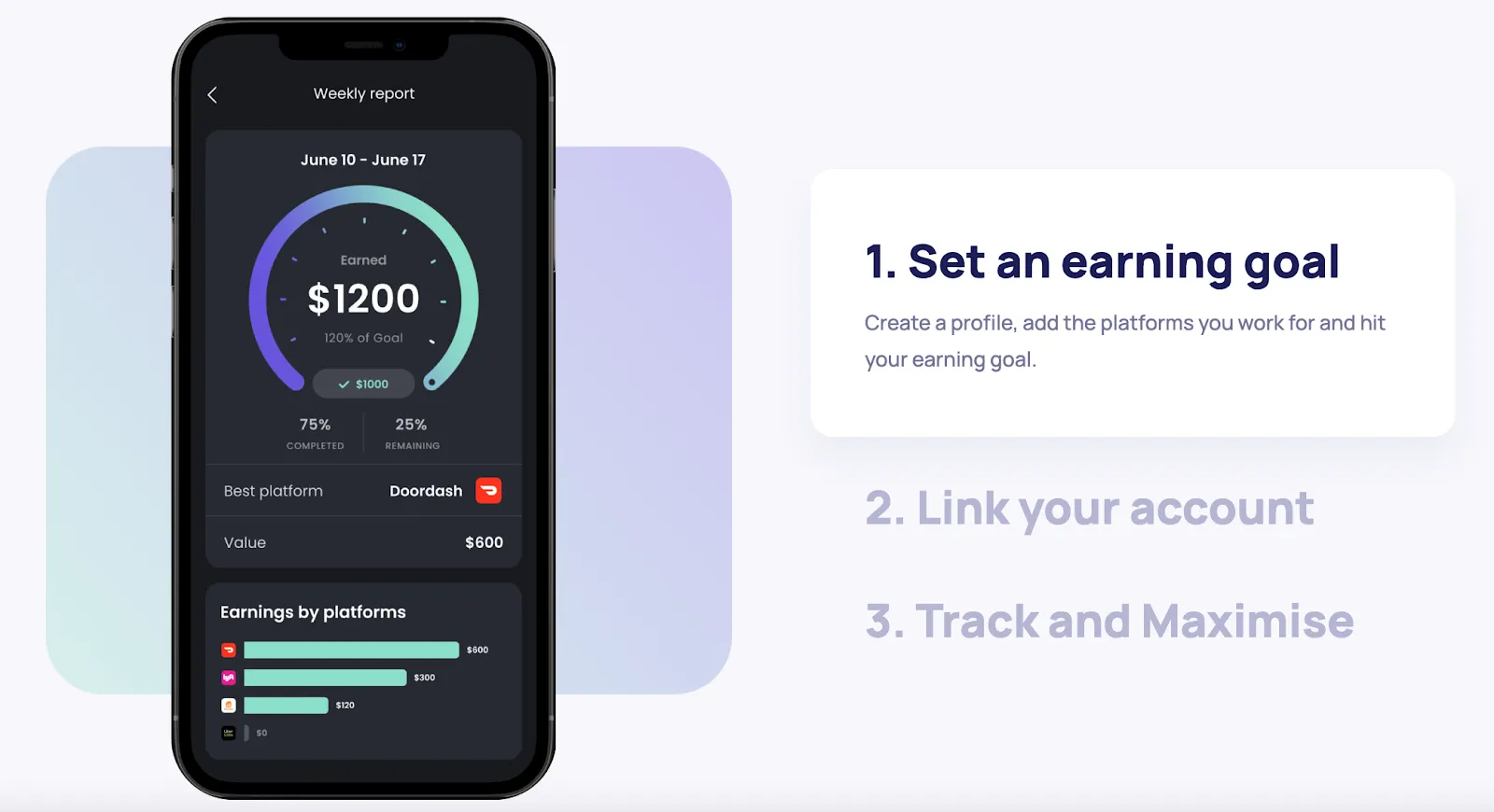
Transparency: Multitudes
Transparency helps build the trust needed for customers to adopt and make the best use of the new products or services that startups create.
Multitude analyses behavioural data on their customers’ team members for insights that team members and leaders can use to improve team performance and health. Team members need to trust that Multitudes is acting in their best interest when using this sensitive data. Multitudes, therefore, adheres to a set of public Data Ethics principles that gives visibility on the data collected and how it is used.
Principles such as reciprocity (giving individuals value in return for their data) build trust with individual team members that their interests are aligned with what Multitudes is trying to build.
Multitudes also uses these metrics on its own team. In this sense, ‘dogfooding’ the product helps the Multitudes anticipate how new features might be used and avoid building features that could be ‘creepy’.
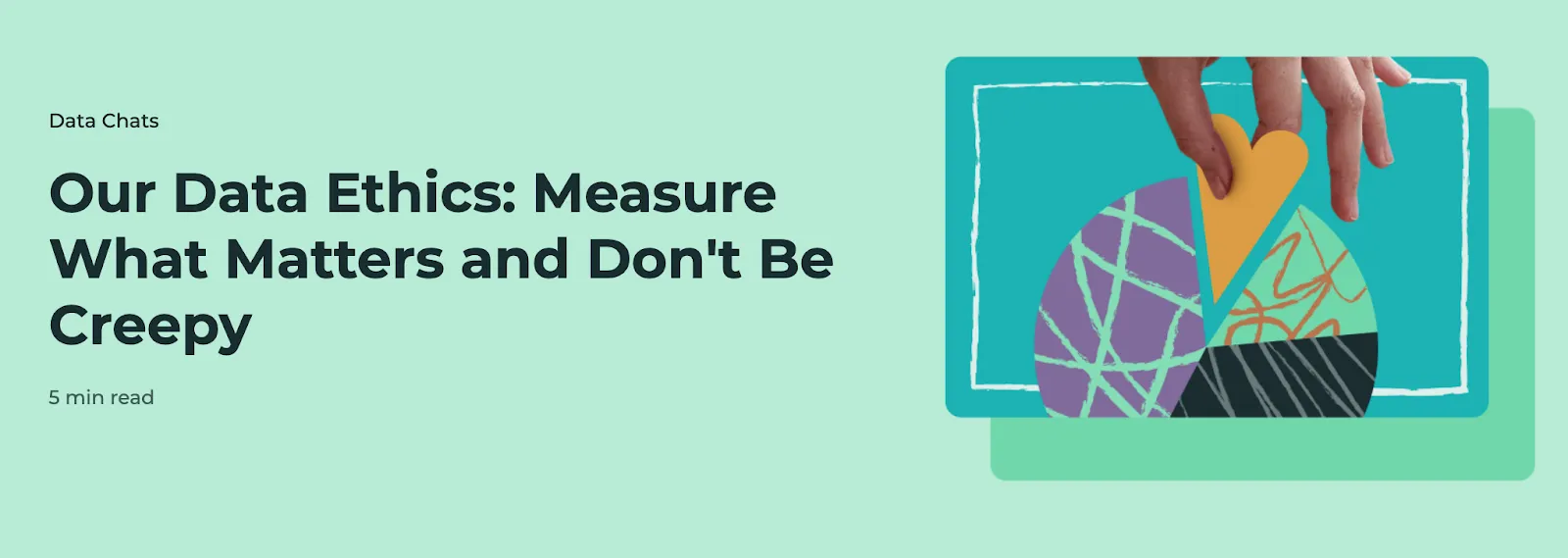
Scaling with customer centricity
The previous section explained how important customer interactions are in building relevant products, however, rapid growth brings its own set of operational and other challenges. This section explores three initiatives founders can use to maintain customer centricity as a business scales.
- Organisational culture: embedding customer centricity through organisational structure, shared values and leadership.
- Product decisions that reduce friction: maintaining an accessible user experience as the product grows in complexity.
- Transparency of customer feedback: ensuring customer feedback is communicated across the business and incorporated into decision-making.
Organisational culture: Mr Yum
Mr Yum is a QR-code based mobile ordering and payment platform for the hospitality and entertainment industry. Given the nature of the hospitality industry, its unique approach is to provide high service levels to what would traditionally be a technology-focused solution.
Scaling requires maintaining an acceptable ratio of account managers and support staff to customers. Therefore, effective hiring is key to Mr Yum’s customer centricity. Mr Yum has grown its team by over 10x over 2 years with only 1 resignation. High service levels have resulted in positive word of mouth and low churn levels.
The founders achieved this through culture, organisational structure and leadership.
Looking first at culture, customer centricity is embedded in Mr Yum’s corporate value ‘Here to Serve’. The company looks for passion for hospitality when hiring. For example, Head of Account Management Adam Baker was previously a chef, and CFO David Cook was CFO of a premium coffee chain. Staff therefore feel connected to the mission to support their hospitality customers. Read more about their culture here.
Mr Yum’s organisational structure sees sales and marketing and customer experience sit as separate entities within the company. This gives the voice of the customer equal weight to sales, particularly with Co-founder and Chief Experience Officer Kerry Osborn representing them at the most senior levels.
On leadership, the founders built trust by supporting staff through the uncertainties of COVID and providing opportunities for personal growth as scaling results in changes to their roles. Staff feel reassured and therefore are able to provide their best service to customers.
Product decisions that reduce friction: Linktree
Growth tends to add complexity to products as a business adds features to serve more user needs. While this benefits existing users who are familiar with the product, the increasing complexity adds friction for new customers.
So how can founders preserve simplicity for new customers while adding features for everyone else?
Linktree allows creators to attach all their online properties to a single link, which can be shared on nearly every online platform (such as social media platforms and email).
The product started as a simple link in bio but as the business has scaled to 24 million users has added functionality such as payments.
To manage complexity, the founders:
- segment their users by bundling the features into 4 pricing plans of increasing complexity;
- conduct frequent product reviews to ensure that users only have to make 1-2 decisions at every step; and
- Implement easy-to-follow step-by-step pop-ups that guide users through using key features (meaning users can largely ‘self-serve’ or work out the next steps themselves).
Key staff also register for new accounts periodically to understand any friction in the sign-up process. The result is an increasingly powerful product that remains simple to use.
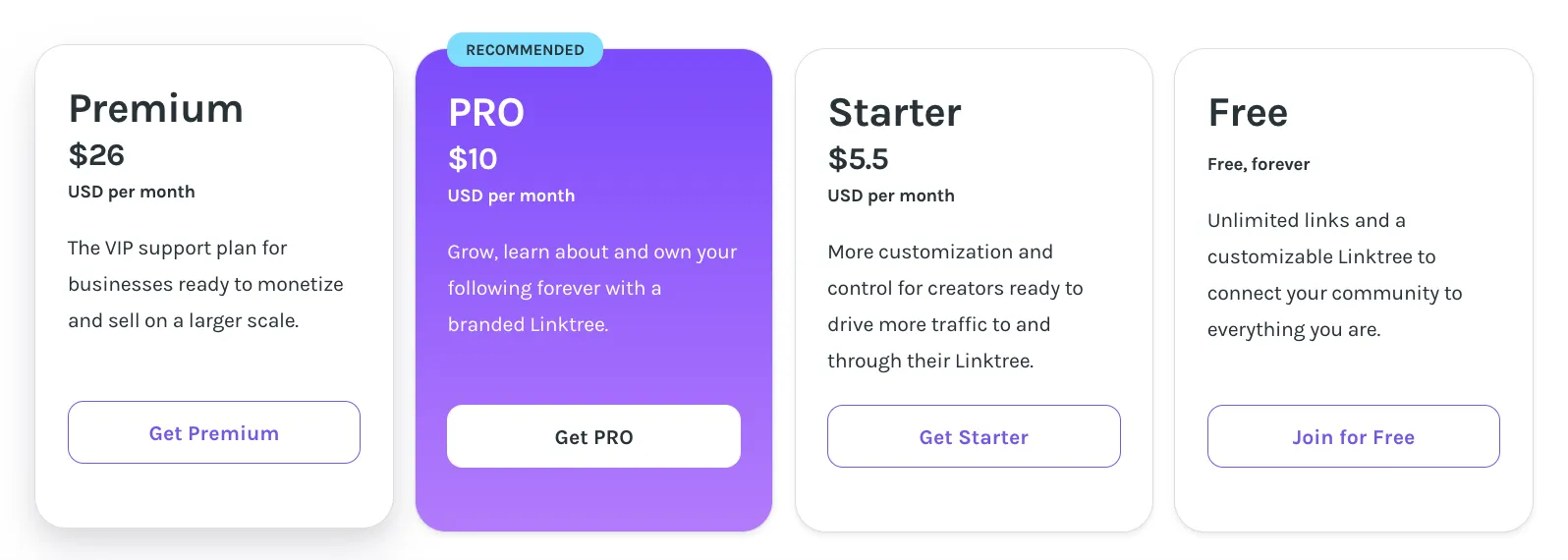
Transparency of customer feedback: Dovetail
As a business scales, founders need to ensure that customer feedback is communicated to the business’ various functions, such as product, design and marketing, who then incorporate this into their decision-making.
At Dovetail, new hires spend their first week in customer support functions. This builds a natural affinity to customer feedback and support in the various functions in the business.
Customer support and user researchers have a forum to share customer feedback at a weekly company ritual where team members can share interesting things that they are working on or need help with. This allows Dovetail to address customer feedback in a holistic way by incorporating the input of team members from multiple functions.
Evaluating customer centricity metrics
Customer centricity metrics cited by the startups interviewed can be broadly grouped into the categories below.

In addition to sharing these metrics, the founders I spoke with shared three insights.
1) Align your business model: build the trust and align the organisation around a North Star metric.
2) Capture qualitative insights: build context behind quantitative metrics and incorporate qualitative insights to build a complete picture of customer engagement.
3) Focus on customer success: build positive word of mouth by helping customers achieve their objectives through using the product.
Align your business model: Mr Yum and Book an Artist
Aligning your business model with customer success helps build trust, which is particularly important in markets that have been slow to adopt technology.
For example, hospitality venues have been traditionally reluctant to adopt technology. With this in mind, Mr Yum charges no upfront integration or subscription fees, meaning they only make money when their customer does.
Book an Artist is an online marketplace connecting artists with customers, such as corporates who want to commission artwork. Like any two-sided marketplace, it is important to build trust to facilitate transactions between both sides. This is particularly important because artists tend to be new to establishing commercial relationships. This is why Book an Artist does not charge any subscription or upfront fees. It only makes money when artists get paid from a successful transaction.
In both cases, having an aligned business model reduces friction and allows the founders to focus on a metric, such as gross transaction value (the total value transacted through their platforms), that reflects both revenue generation and customer experience.
Capturing qualitative context: Dovetail and Mr Yum
There is a degree of subjectivity in measuring customer centricity.
Dovetail recommends understanding the qualitative context behind metrics such as monthly active users. For example, understanding if users are getting consistent value from the product, which is causing them to use it throughout the month, rather than logging in once a month for a narrow feature.
The same rationale is used for understanding churn. Exit interviews are held to determine the underlying reasons for customers leaving (such as pricing, wrong customer persona and poor user experience).
Mr Yum combines qualitative insights and quantitative metrics into a health score for each venue that it measures over time and monitors for any changes.
A focus on customer success: EntryLevel and Mr Yum
Customer success results in positive word of mouth and upselling opportunities.
EntryLevel provides 6-week online courses or ‘Programs’ to help students reskill into in-demand roles such as product management and growth marketing. Its mission to reskill 1 billion people by 2030 means that its programs must be affordable and lead to employment (their customer’s main goal).
Founder Ajay Prakash created a pricing model where students are refunded their course fees as an incentive to complete their courses. Additionally, courses are based on real-world tasks that students will face on the job. Students create a portfolio that demonstrates their competency for the role, which will help them get employed.
EntryLevel achieves favourable course completion rates and high NPS scores of 70. You can read more about edtech here and EntryLevel here.
Mr Yum’s customers succeed by providing great guest experiences as well as attracting more guests to their venues.
Customer satisfaction and engagement are assessed at key milestones in the onboarding process to ensure they can make the best use of the platform to provide great guest experiences. Achieving a ‘strong start’ is key to upselling additional features.
Their recent acquisition of MyGustlist will help venues drive more guest visits. MyGuestList has customer relationship management and messaging capabilities, and combining this with the information from Mr Yum's ordering and payment platform allows venue operators to:
- Build a profile on their guests including frequency of visits and preferred dishes (e.g. vegan food preference);
- Gives the venue the option of sending customised marketing messages to entice customers to return (such as sending a vegan guest a promotional email offer on a new vegan dish on the menu); and
- Attribute or track the returning customer to the marketing message sent from Mr Yum’s platform which builds trust in the platform itself.
Assessing the costs of customer centricity
There are costs to customer centricity. For example, not charging customers for integration or in the onboarding process means that Mr Yum incurs an upfront cost for every customer that needs to be recouped over time.
Founders need to evaluate these costs against the benefits they bring to the business, such as evaluating the Customer Lifetime Value (CLV) against the costs to acquire them.
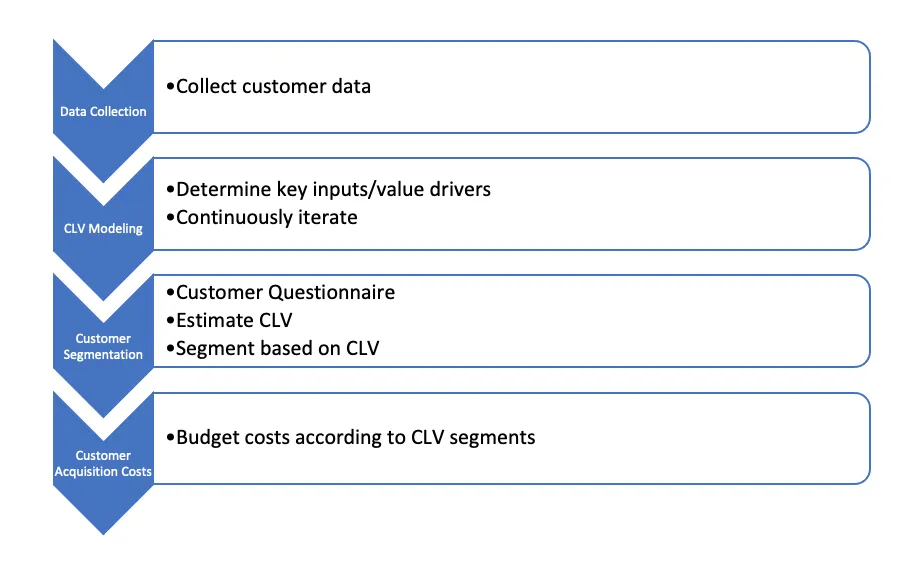
- Data collection: Data is collected from existing customers and used to build and iterate on a model to assess CLV.
- CLV modelling: Key drivers such as table numbers, turnover/revenue and customer churn are identified from the data and used to construct a model for CLV.
- Customer segmentation: Key drivers identified are included in a questionnaire for potential customers. Based on this evaluation, prospective customers are grouped into 3 main segments (enterprise, mid-market and small and medium businesses).
- Customer acquisition costs: The above segmentation will determine the sales approach and the costs that should be budgeted for the prospective customer.
The founders made an interesting exception to this approach during the depths of the COVID crisis. They made the considered decision to onboard customers that desperately needed Mr Yum’s online ordering functionality even though they knew these would be unprofitable.
The decision to uphold their value of ‘Here to Serve’ paid off. It took only 6 weeks for Mr Yum to return to its pre-COVID gross transaction value levels and the goodwill and brand recognition this built helped establish them in the industry.
In conclusion
Customer centricity is vital to a startup’s success. This needs to be emphasised through major stages of a business’s growth from discovering a market niche and building a product through to scaling. Founders should also understand how to use key metrics to evaluate the level of customer centricity and its costs.
Underpinning all this are the founders themselves.
The founders I spoke with were clear on the fundamentally important role customers have in their journeys. For them, customers were tied to the reason they started their businesses in the first place, and this passion continues to drive their team members and help their business succeed.

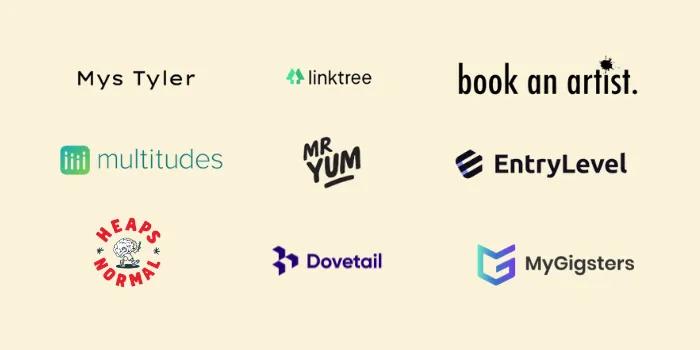




.jpg)

